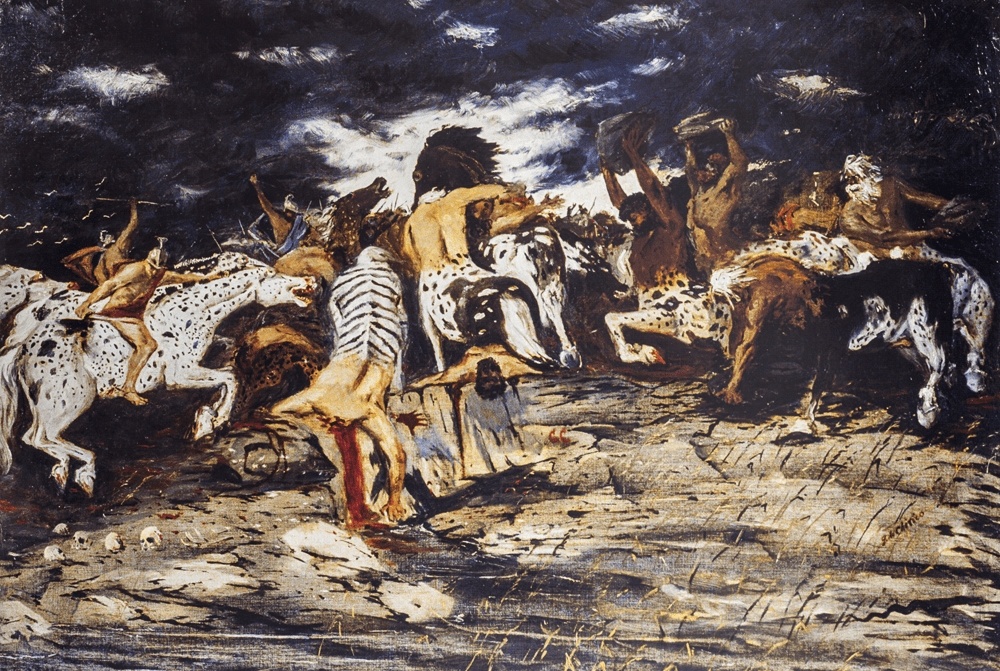13 March 2016

Having undergone several years of formal artistic training –first frequenting Athens’ Ethnikò Metsòbion Polytechneìo (1900-1906) followed by Munich’s prestigious Königlichen Akademie der Bildenden Künste (1906-1909)– de Chirico’s early Böcklinesque paintings mark his debut as a free-thinking artist, liberated from daily institutional constraints. The work of Swiss symbolist painter Arnold Böcklin (1827-1901), which de Chirico came into close contact with during his time in Munich, proved seminal in this post-academic phase, an artist whom de Chirico championed for executing works of mythological and fantastical subject matter that convey a disquieting sense of surprise, revelation and déjà vu. Inspired by Böcklin’s choice of subject matter and timeless atmosphere (Stimmung), clear parallels can be found in a number of the artists’ work, including the exhibited Battle with the Centaurs (1909. The metaphysical intensity of the work of German symbolist Max Klinger (1857-1920) also inspired de Chirico’s early phase of 1909-1910.
Highlighting his various periods with examples from his earliest works to last ones, Giorgio de Chirico: The Enigma of the World exhibition took place at the Pera Museum between 24 February - 08 May 2016.

Martín Zapater y Clavería, born in Zaragoza on November 12th 1747, came from a family of modest merchants and was taken in to live with a well-to-do aunt, Juana Faguás, and her daughter, Joaquina de Alduy. He studied with Goya in the Escuelas Pías school in Zaragoza from 1752 to 1757 and a friendship arose between them which was to last until the death of Zapater in 1803.
Tuesday - Saturday 10:00 - 19:00
Friday 10:00 - 22:00
Sunday 12:00 - 18:00
The museum is closed on Mondays.
On Wednesdays, the students can
visit the museum free of admission.
Full ticket: 300 TL
Discounted: 150 TL
Groups: 200 TL (minimum 10 people)